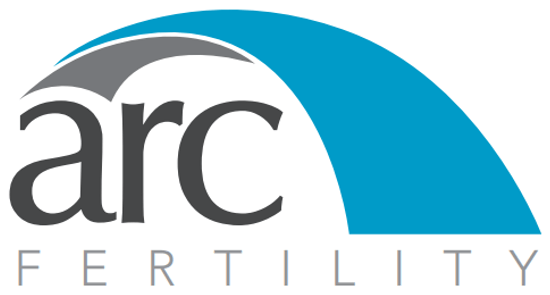
Hysteroscopy and other Infertility Diagnostic and Treatment Modalities
INTRODUCTION
Hysteroscopy is a valuable diagnostic and therapeutic modality in the management of infertility. Nevertheless, the role of hysteroscopy in infertility has been changing as its capabilities are increased while other diagnostic modalities replace some of its former uses. Traditionally, hysteroscopy has been utilized for diagnostic and operative intervention for endometrial polyps, submucous and pedunculated myomas, intrauterine adhesions, and uterine septa. It is also useful for the diagnosis of congenital anomalies and evaluating endocervical anatomy. Other modalities for evaluation of the uterine cavity include endometrial biopsy, hysterosalpingogram, ultrasound, sonohysterography, magnetic resonance imaging, and the adjunctive role of laparoscopy.
OTHER DIAGNOSTIC AND TREATMENT MODALITIES
For decades dilatation and curettage was the standard form of intrauterine assessment and treatment. This technique is still extremely useful as an adjunctive measure, but has serious deficiencies in terms of sensitivity and specificity. With the potential exception of dating endometrium, blind dilatation and curettage or endometrial biopsy by itself will often produce inferior results to other superior diagnostic and treatment approaches.
Hysterosalpingography can be used for screening uterine abnormalities, and for decades has been safe, simple, inexpensive, and reliable. It is useful for diagnosing uterine polyps, myomas, intrauterine adhesions, congenital uterine anomalies, and can evaluate the tubal status in the proximal, distal, and possibly intrapelvic region. Additionally, reasonable data suggest that hystero-salpingography may be associated with slightly increased pregnancy rates following its use. Whether this is a result of forcing a mucus plug or other lesion out of the fallopian tube, stimulating the fallopian tube, or some other unknown physiologic mechanism, is not clear. Other diagnoses which may be made include adenomyosis or unusual structural defects.
Intrauterine filling defects seen on hysterosalpingogram could be air bubbles, mucus, polyps, submucous fibroids, intrauterine synechiae, septum, or asynchronous uterine contractions. It is well documented that hysterosalpingogram has a false positive rate with a range being reported at 8.7 to 31.7%, a false negative rate of 1.3% to 44%, and with respect to intrauterine adhesions, a false positive rate of up to 54.3% when compared with hysteroscopy. Other disadvantages include discomfort and pain experienced by patients, radiation (33 to 550 millirads) infection (0.14% to 3.1%), hemorrhage, embolism of dye, and hypersensitivity to iodine. Many clinicians feel that hysterosalpingogram is useful for screening for infertility and recurrent pregnancy loss, and that hysteroscopy is most useful following an abnormal hysterosalpingogram or for otherwise unexplained infertility. Hysteroscopy has the obvious advantage of avoiding ionizing radiation and iodine-containing contrast material, as well as having a lower false positive rate than hysterosalpingogram. Disadvantages to hysteroscopy are the potential for producing artifactual polyps or adhesions during the performance of the procedure and the fact that this is a minor operative procedure. However, the increasing utilization of office hysteroscopy with paracervical block and small endoscopes has markedly reduced the costs and risks associated with hysteroscopy.
Ultrasonography and Sonohysterography
Ultrasonography is a useful adjunct in the diagnosis of infertile patients. Ultrasonography is most useful for the diagnosis of myomas, adnexal or pelvic masses, and polycystic ovarian disease. It has an increased ability to identify calcified myomas or other calcified lesions, such as osseous metaplasia. Studies comparing transvaginal ultrasonography with hysteroscopy in the diagnosis of myomas have reported sensitivity of 100% by both methods, with specificity of 94% with ultrasound and 96% with hysteroscopy and a predictive value of a normal study of 100% with each, and a predictive value of an abnormal study of 81% for ultrasound and 87% for hysteroscopy. The recent widespread utilization of sonohysterography has further improved ultrasonography’s role in diagnosis of infertile conditions. Studies have shown a high level of sensitivity and specificity as well as predictive value of normal and abnormal tests. In particular, for the evaluation of submucous myomas, sonohysterography appears to be the most accurate technique for detecting submucous myomas and evaluating their size, location, and degree of intracavitary growth. The technique is also very sensitive for identifying intrauterine polyps, and can be utilized to diagnosis congenital abnormalities as well as adhesions. Since this technique is also a simple office procedure, it has an adjunctive role to play with hysteroscopy.
Magnetic resonance imaging is rarely needed for identification of intrauterine lesions. However, it can be useful for differentiating the adenomyomatous from myomatous uterus, and for complex congenital uterine abnormalities as well as other rarer uterine abnormalities or pelvic masses. Its high cost limits its general utilizability, but it is helpful in selected circumstances.
Hysteroscopy is performed approximately half the time for the diagnosis of infertility. It is generally best performed in the postmenstrual proliferative phase. Different locations for hysteroscopy include the office, surgery center, or hospital operating room. Different media include CO2 gas, Sorbitol, glycine, Mannitol/Sorbitol mixture, 5% dextrose in water, or 32% Dextran-70. Endoscopes can range from 2 mm in size to 6.5 mm in size. The choice of location, medium, and instrumentation depends on the availability of facilities and resources, the anticipated diagnosis, and the surgical plan. The optimum approach involves one which has a high probability of resolving the clinical issue at hand, with the major difference in approach depending on whether or not operative intervention will be required, safety, and cost. Adjunctive procedures such as hysterosalpingography and sonohysterography can be of significant help in identifying the patient who requires hysteroscopy, and the best hysteroscopic approach for that patient given the clinical conditions.
Carbon dioxide gas has the advantage of excellent clarity, and it is very safe. Disadvantages are that CO2 gas bubbles can form and blood can quickly obscure the view. CO2 hysteroscopy is diagnostic only, and there is a small potential for systemic absorption resulting in acidosis, arrhythmias, and even fatal complications. Five percent dextrose in water has the advantage of good clarity and being safe, but disadvantage of being primarily diagnostic. However, recently developed instrumentation which will allow the use of bipolar electrosurgery in normal saline may dramatically improve the utility of the use of normal saline for operative hysteroscopy. Sorbitol, glycine, and Mannitol/Sorbitol can be very effectively used especially with the resectoscope for treatment of large intrauterine lesions, such as myomas. Nevertheless, there are potential serious complications including pulmonary edema, fluid overload with electrolyte imbalance, cardiovascular collapse, neurologic toxicity, and anaphylaxis.
Thirty-two percent Dextran-70 has the advantage of providing good clarity and it is miscible with blood, which is very advantageous for operative procedures. Disadvantages include potential allergic reactions, noncardiogenic pulmonary edema, and potential coagulation defects. In addition, the material is more difficulty to work with because of its stickiness for the surgeon, operating room personnel, and equipment. While most gynecologists have their favorite medium, it is usually advantageous to have familiarity and be able to use different media depending on the surgical procedure.
The choice of instrumentation will often depend on the choice of medium. Larger instruments tend to be used for operative intervention, and tend to require more anesthesia. Anesthesia may range from simple reassurance, nonsteroidal anti-inflammatory drugs, and anxiolytics, through conscious sedation with intravenous medication, epidural anesthesia, or general anesthesia. Again, the least interventional, yet effective and safe, anesthetic should be chosen for the particular situation.
Contraindications to hysteroscopy include an absolute contraindication for pelvic infection or endometrial cancer, and relative contraindication in the case of pregnancy, excessive bleeding, cardiovascular disease, or severe vaginitis.
Complications of hysteroscopy are reported in 1 to 3% of cases. These include cervical laceration, uterine perforation, bleeding, reactions to the distention media, or anesthesia. Potential long-term complications include femoral injury resulting in intrauterine scarring or tubal obstruction, as well as injury to contiguous organs.
For many clinical conditions it is recommended that contemporaneous laparoscopy be performed. This includes situations in which a laparoscopy is clinically indicated as an independent procedure, when there are also indications for hysteroscopy. The combination of these two procedures at one operative setting is clearly of potential benefit to most patients. Additionally, laparoscopy may be directly helpful in assessing and treating the uterine cavity in the case of uterine myomas, tubal obstruction, and in the evaluation of congenital uterine abnormalities as well as in complex diagnostic situations.
DIAGNOSIS AND TREATMENT
General Considerations
Hysteroscopy should be performed after careful history and physical examination as well as utilization of adjunctive preoperative tests for determination of tubal status as well as the identification of pelvic masses. When performing a diagnostic laparoscopy at the same time as hysteroscopy, it is my practice to place the vaginal tenaculum and Conn cannula, and then perform a diagnostic laparoscopy and hydrotubation. Subsequent to that a hysteroscopy is performed. This allows the hysteroscopy to be carried out with much greater information than would be otherwise. The hysteroscopy is performed immediately after the diagnostic laparoscopy and before any operative laparoscopic procedures in order to minimize trauma to the uterine cavity and to limit the creation of artifactual lesions or bleeding. The initial step at hysteroscopy is to identify the uterine cavity and ostia and to evaluate the right and left cornua, fundus, anterior and posterior walls, and lateral walls for specific lesions, as well as to evaluate the overall contour of the uterine cavity. The endocervical canal is then carefully evaluated also. Uterine sounding is performed at the end of the hysteroscopy to minimize the creation of intrauterine artifactual lesions. Conditions which should be identified include foreign intrauterine objects (e.g. IUD), adenomyosis, polyps, adhesions, fibroids, synechiae, or congenital abnormalities. The endocervical canal is also carefully evaluated on withdrawing the instrument.
Endometrial Biopsy and Polypectomy
Endometrial biopsy and polypectomy are usually performed at the time of hysteroscopy. Biopsy is easily carried out with use of a biopsy instrument or grasper, or curettage of the cavity. This will identify polyps as well as luteal phase dysfunction, endometritis, or rarely an infertile patient’s malignancy.
Intrauterine myomas can usually be identified easily at hysteroscopy. However, large myomas which only produce a subtle deformation of the cavity can be difficult to recognize. Additionally, large myomas, even though easily recognizable, can be very difficult to treat. Uterine myomas are a clinical condition in which preoperative evaluation with ultrasonography and preferably sonohysterography can improve our ability to diagnose and treat the condition appropriately. Myomas can be removed effectively with a resectoscope if they have more than 50% of their volume inside the contour of the uterine cavity. Usually treatment of intrauterine myomas with GnRH agonists prior to hysteroscopic resection is beneficial. GnRH agonists will reduce the myoma volume approximately 50% in most, but not all, cases. It is important to recognize that the uterine volume would also be reduced and that the uterus would be hypoestrogenic and therefore more susceptible to perforation, even in the premenopausal woman, who has been treated with GnRH agonists. Resectoscopic myomectomy is a highly effective procedure, but fraught with potential hazards with respect to uterine injury from the electrosurgical energy, perforation of the uterus, bleeding, infection, and most importantly, serious complication as a result of fluid overload. The upper range of uterine size when performing procedures such as myomectomy should be approximately 8-12 cm of depth, depending on the surgeon’s experience, and only extremely knowledgeable and experienced surgeons should attempt myomectomies larger than 5 cm. When a fluid deficit of 1,000 cc is documented, electrolytes should be drawn and/or intravenous Lasix given. A Foley catheter should be used during long and complex cases to allow measurement of urine output. All fluid measurements should be taken every 15 minutes and documented. Once a 1,500 cc fluid deficit is identified, the case should be terminated. The case should also be terminated if sodium falls below 125 mEq/L. When Hyskon is used consideration for termination of procedure should be made at 300 mL differential, and absolutely at 500 mL without exception. Operative cases should normally be completed within two to 2-1/2 hours of initiation, or consultation should be obtained with more experienced surgeons. Despite the inherent risks of hysteroscopic myomectomy, the advantages of hysteroscopic resection include the avoidance of laparotomy and a uterine incision, as well as the avoidance of a need for cesarean section and avoidance of the creation of tubo-ovarian adhesions. Overall, this is an excellent procedure if performed by skilled surgeons.
Asherman’s syndrome consists of: (1) intrauterine adhesions with or without amenorrhea; (2) traumatic amenorrhea in which there is no visible pathology, and possibly a visceral reflex in the isthmic region; or (3) atretic amenorrhea in which there are adhesions at the internal os. Intrauterine adhesions have been reported in 7% to 25% of infertile women who have been evaluated, although the incidence is probably less today than historically. The pathophysiology involves damage to the stratum basalis and bridging of denuded uterine walls with variable cavity obliteration.
Symptoms associated with intrauterine adhesions include hypomenorrhea, amenorrhea as a result of endometrial destruction, cyclic pain, infertility possibly as a result of sperm migration disruption, tubal ostia obstruction, or impairment of blastocyst implantation. Recurrent abortions have been reported because of decreased uterine size or insufficient endometrium, and abnormal placentation may result in a defective stratum basalis.
Predisposing factors to intrauterine adhesions include an antecedent pregnancy, which is found approximately 90% of the time, with 70% being post-abortal and 20% being postpartum. Uterine trauma from curettage at surgery increases the probability of adhesions. It is felt that infection plays an important role in the development of intrauterine adhesions although its role is still somewhat controversial. Tuberculous endometritis is an etiologic infection, and patients with congenital abnormalities, such as DES, may be at higher risk. It has been reported that missed abortion patients who have a curettage can form adhesions as often as 31% of the time, whereas with early abortion the risk is only 6%. It has also been reported that only 1.2% of patients with infertility have intrauterine adhesions on hysterosalpingogram whereas those with repeated abortion have a 5% risk and those with puerperal curettage have a 39% risk.
Classification of intrauterine adhesions by the American Fertility Society Classification requires evaluation of the extent of the cavity, adhesion density, and menstrual pattern, with classification of mild, moderate, or severe. Treatment can involve no treatment, in which case it has been reported that the majority of patients have menses which return, and half of patients conceive, with 30% having a term pregnancy and 13% placenta accreta. Treatment involves removal or division of the adhesions with an endoscope, endoscope sheath, curettes, scissors, cautery, resectoscope, or neodymium-YAG laser. It is controversial whether patients should receive prophylactic antibiotics or postoperative estrogen, or use of an IUD or Foley catheter. It is my practice to give patients Doxycycline 100 mg the night prior to surgery and for three days following surgery, as well as estrogen for four weeks postoperatively at a dose of conjugated equine estrogens 2.5 mg per day for one week and 1.25 mg per day for three additional weeks. Occasionally these doses are increased in the case of extremely severe adhesions.
In addition, a Foley catheter is left in the uterine cavity for three to 10 days in more severe cases. Objectives of treatment include the removal of adhesions and restoration of normal anatomy, with prevention of recurrence of adhesions, the restoration of menstruation, and the restoration of fertility. To achieve these ends, the most gentle lysis of adhesions should be performed as is possible, and in the case of extensive adhesions concomitant laparoscopic observation helps to reduce the risk of perforation and potentially improve the outcome for the patient. Anesthesia for hysteroscopic lysis can be minimal or moderate, including a paracervical block and I.V. medication, but for extensive disease as diagnosed by hysterosalpingogram, hysteroscopy or sonohysterogram, a general anesthesia may be more appropriate, and obviously so if laparoscopy is performed at the same time.
Results of treatment of intrauterine adhesions include the restoration of menses in 69 to 90% of occasions, a pregnancy rate of 41 to 80%, a term pregnancy rate of 60% to 90%, and placenta accreta less than 1% of the time. It is very clear that prognosis is much poorer for more severe disease, and if multiple procedures have been necessary. Complications of intrauterine adhesiolysis include perforation (2%), infection (less than 2%), adhesion reformation (20-40%), and placental complications (2-40%).
Congenital Uterine Abnormalities
Congenital uterine abnormalities are thought to occur in approximately 1 to 2 per 1,000 women, but at sterilization the prevalence has been found to be as high as 2 to 6%. Most patients are asymptomatic. The percentage with infertility is unknown although it has been reported that 5 to 10% of infertile women who are evaluated hysteroscopically are found to have congenital uterine abnormalities. This prevalence appears higher than my own personal experience.
The association of congenital uterine anomalies with infertility is unclear. When this anomaly has been incidentally discovered, 73% of patients have conceived and 83% of pregnancies have been successful. The mechanism for infertility could include an association of endometriosis or associated tubal anomalies. Comprehensive infertility evaluation is necessary prior to concluding that a congenital uterine anomaly is a cause of infertility. Intravenous pyelogram should be performed to rule out associated renal anomalies. The American Fertility Society Classification of congenital uterine anomalies has five major groupings which are hypoplastic/agenic, unicornuate, didelphis, bicornuate, or septate. Laparoscopy at the time of hysteroscopy can be useful to delineate the external uterine contour for uterine anomalies as well as leiomyomata. Hysteroscopic treatment of the uterine septum has the objective of creating a uniform triangular cavity. Electrosurgery at 30 watts can be used for septum resection. Cervical septum associated with uterine septa can be treated by placing a probe at the internal os and making an incision in that area, and dividing the septum in the uterus, but leaving the cervical septum intact. It has been shown that hysteroscopic septum resection is effective in treating first trimester abortion and that second trimester abortion patients can be benefited but they still are at increased risk for pre-term labor. It is important to recognize that septum resection does not “cure” unexplained infertility. Other congenital uterine anomalies may be associated with spontaneous abortion, pre-term births, breech presentation, and/or placental abruption. The basis for this is thought possibly to be vascular insufficiency, but this is not clearly known.
No treatment is needed for uterus didelphis or unicornuate uterus. The Strassman procedure may be indicated for a bicornuate uterus associated with
pregnancy loss. Hysteroscopic treatment of a septate uterus can be helpful. While some have advocated the use of GnRH agonists and postoperative estrogen treatment, there are no studies which confirm improved results from the utilization of these additional modalities. Postoperative hysterosalpingogram at two months can evaluate the results prior to patients attempting pregnancy.
Proximal tubal occlusion can be diagnosed by hysterosalpingography and confirmed at laparoscopy. In clinical situations in which obstruction seems to be persistent, selective hydrotubation performed hysteroscopically can help diagnose and/or overcome these occlusions. Current technology also allows for tubal catheterization and possibly falloposcopy to help evaluate the fallopian tubes.
While not routinely performed it is clear that the evaluation of intrauterine pressure required to produce hydrotubation and spill from the fallopian tubes is negatively correlated with fallopian tube and fimbrial scores as found at laparoscopy with a high degree of probability. Several studies had confirmed this negative correlation of pressure for spill with tubal status. It is possible that measurement of these tubal pressures will become more common in the future and improve our ability to determine an accurate prognosis for tubal function, and subsequent to that for pregnancy.
Conditions associated with proximal tubal obstruction include functional conditions, such as muscle spasm or stromal edema, intraluminal material, intraluminal lesions such as adhesions or polyps, infectious lesions such as salpingitis or fibrosis, structural lesions such as endometriosis, and anatomic lesions such as leiomyomata. Should hysterosalpingography, laparoscopic hydrotubation, or selective tubal hydrotubation not confirm patency, tubal catheterization can be performed. This will help confirm tubal occlusion, create tubal patency, and avoid either major surgery for tubal repair, or in vitro fertilization if successful. Contraindications to tubal catheterization include active pelvic infection or uterine bleeding, allergic reaction to local anesthetic agents, extensive uterine synechiae or submucous myomata, or other significant medical disease. However, tubal catheterization can be a difficult procedure, which is highly operator dependent. Technical failures occur at least 10% of the time. However, dramatic technological advances have improved the equipment to the point where clinical utility will soon become a reality.
Hysteroscopic correction of cornual occlusion results in pregnancy rates approximately 1/3 of the time, and has similar results to fluoroscopic cannulation of the fallopian tube. The outcome is highly dependent on the type of lesion, with thin nonobstructive lesions having success rates approximately 60%, and thick nonobstructive lesions about 33%, dilated tubal stenosis about 39%, but severe fibrotic processes having success rates approaching 0%. Advantages of tubal catheterization include it being an effective triage for patients with tubal disease, the avoidance of contrast allergies, and the avoidance of radiation, as well as the avoidance of laparoscopy in selected patients. This approach is superior to proximal tubal micro-reanastomosis when successful and superior to IVF when successful. There are low complication rates for this procedure.
Recently, the Food and Drug Administration has just given the first approval for a falloposcope in the United States. The falloposcope will be utilized through the hysteroscope and will dramatically increase our ability to diagnose pelvic disease and determine tubal status endoscopically. The falloposcopy system which has been approved is a coaxial system which uses guidewires and coaxial catheters to access the tube and requires hysteroscopy or fluoroscopy for placement. Laparoscopic assistance is sometimes required in order to completely cannulate the fallopian tube. Satisfactory images can be obtained, and scoring systems have been developed. These will allow for the improved determination of prognosis based on tubal status. Studies have shown an agreement of falloposcopy and hysterosalpingogram approximately 60 to 75% of the time. Technical failures occur approximately 10% of the time. The risks are those associated with all hysteroscopic procedures, including primarily perforation and infection. The risk to normal fallopian tubes through the use of falloposcopy is not clearly known but thought not to be significant.
CONCLUSIONS
For decades, the role of hysteroscopy has been important in the diagnosis and treatment of infertile patients, and will continue to do so. Newer technology has, in some ways, decreased the necessity for hysteroscopy for diagnosis, but also increased its utility for treatment.
In general, our approach is to perform hysterosalpingography on infertile patients who have never had such a procedure and require overall screening of their pelvic status. This provides an evaluation of the uterine cavity as well as the fallopian tubes and perifimbrial region. Additionally, there may be some diagnostic benefit to this procedure. Should intrauterine abnormalities or tubal occlusion be identified, then depending on the clinical situation the patient undergoes diagnostic hysteroscopy with possible concomitant laparoscopy at a facility capable of performing general anesthesia so that operative intervention could be carried out if indicated. In many patients a sonohysterogram is performed following the hysterosalpingogram. This procedure has the added benefit of identifying uterine myomas as well as adnexal masses such as endometriomas, or abnormalities such as polycystic ovarian disease. Sonohysterography will also help confirm suspicious but not well documented hysterosalpingographic uterine abnormalities. It is more common to postpone operative intervention with hysteroscopy and/or laparoscopy until both a hysterosalpingogram and sonohysterogram have been performed, if clinically indicated.
Hysteroscopy is indicated as a therapeutic intervention in cases where lesions have been confirmed within the uterine cavity or within the proximal fallopian tube. In the latter case concomitant laparoscopy with hydrotubation is performed initially, followed by selective hydrotubation, and then tubal catheterization hysteroscopically if necessary. These procedures are performed in an outpatient setting, conscious sedation with intravenous medications utilized if possible, but for more extensive operative procedures, general anesthesia is employed.
It is our current practice to always evaluate the uterine cavity through either hysterosalpingogram, sonohysterography, or hysteroscopy in the infertile patient, the patient with recurrent pregnancy loss, and in all patients prior to in vitro fertilization.
The recent development of falloposcopy should dramatically increase the utilization of falloposcopy in evaluation of pelvic status in the infertile patient. The optimum diagnostic and treatment paradigm for this new technology is evolving.
BIBLIOGRAPHY
Cicinelli E, Romano F, Anastasio PS, et. al. Transabdominal Sonohysterography, Transvaginal Sonography, and Hysteroscopy in the Evaluation of Submucous Myomas. Obstet Gynecol 1995;85(1):42-7.
Fayaz JA, Mutie G, Schneider PJ. The diagnostic value of hysterosalpingography and hysteroscopy in infertility investigation. Am J Obstet Gynecol 1987;156(3):558-60.
Keltz MD, Olive DL, Kim AH, Arici A. Sonohysterographic screening for recurrent pregnancy loss. Presented at the American Society for Reproductive Medicine, 51st Annual Meeting, Seattle, WA, October 7 – 12, 1995.
Romano F, Cicinelli E, Anastasio PS, et. al. Sonohysterography versus hysteroscopy for diagnosing endouterine abnormalities in fertile women. Int J Gynecol Obstet 1994;45:253-60.
Shamma FN, DeCherney A. The Role of Hysteroscopy in In Vitro Fertilization-Embryo Transfer. REP 1992;2(3):132-3.
Siegler AM. Uses of Hysteroscopy in Infertility. Contemp OB/GYN 1994:68-79.
Siegler AM, Valle RF. Therapeutic Hysteroscopic Procedures. Fertil Steril 1988;50(5):685-701.
Wang CW, Lee CL, Lai YM, et. al. Comparison of Hysterosalpingography and Hysteroscopy in Female Infertility. JAAGL August 1996;3(4):581-4.






